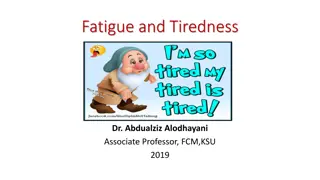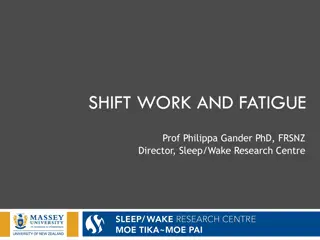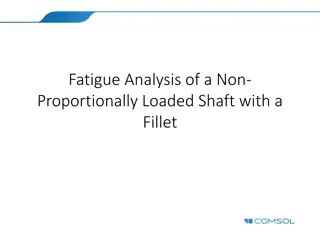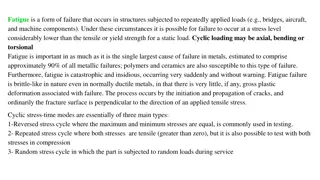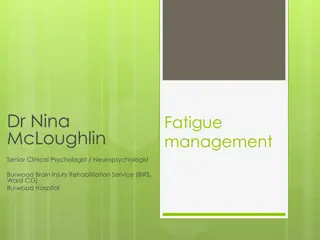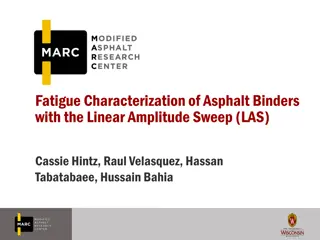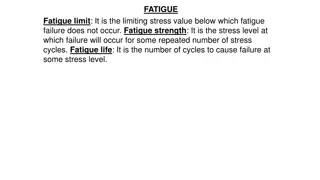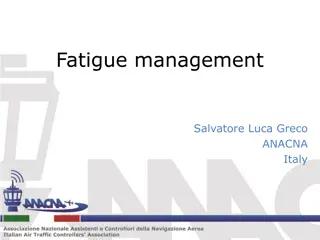Notch Approximation for Low-Cycle Fatigue Analysis in Structural Components
Structural components subjected to multi-axial cyclic loading can be analyzed for low-cycle fatigue using notch approximation. By transforming elastic response into an elastoplastic state, the computation time is reduced, and fatigue evaluation is done based on the Smith-Watson-Topper model. Strain-based models are utilized, and while results may differ from full elastoplastic simulations, they capture the general fatigue trend qualitatively.
- Fatigue Analysis
- Notch Approximation
- Structural Components
- Smith-Watson-Topper Model
- Elastoplastic Response
Download Presentation

Please find below an Image/Link to download the presentation.
The content on the website is provided AS IS for your information and personal use only. It may not be sold, licensed, or shared on other websites without obtaining consent from the author. Download presentation by click this link. If you encounter any issues during the download, it is possible that the publisher has removed the file from their server.
E N D
Presentation Transcript
Notch Approximation to Low-Cycle Fatigue Analysis of a Cylinder with a Hole
Model Background A structural component is subjected to multi-axial cyclic loading. The stresses are above yield limit and localized plasticity occurs. The elastoplastic response is computed using a method of notch approximation. Fatigue is based on the stress-based Smith- Watson-Topper model. This model demonstrates how to perform low- cycle fatigue in absence of plastic material data.
Notch Approximation Notch approximation is an effective way to perform fatigue evaluation since the elastoplastic response is based on an linear elastic analysis. The elastic response is transformed using the Neuber correction into an elastoplastic state. The full elastoplastic simulation it therefore not needed and the computation time is significantly reduced.
Fatigue Prediction The strain-based models are suitable for low- cycle fatigue. The fatigue is evaluated with the Smith- Watson-Topper model. The results based on the notch approximation can differ from the fatigue prediction of a full elastoplastic simulation. However they qualitatively capture the general fatigue trend.





